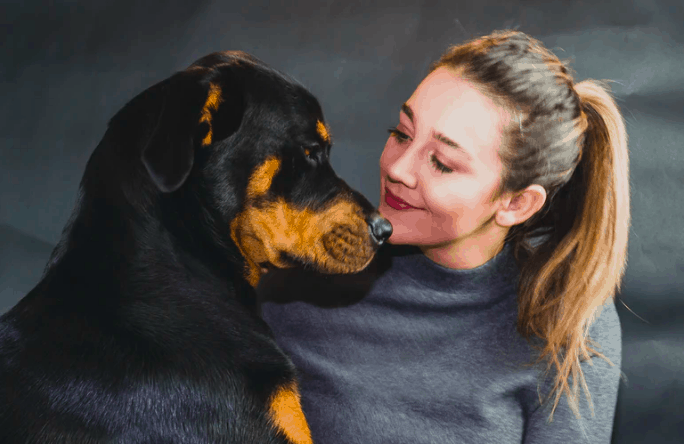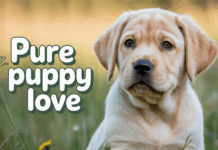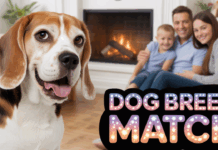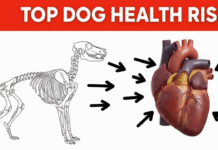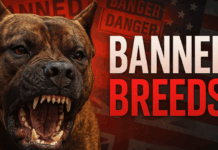Last Updated on September 27, 2024 by Dogs Vets
The Rottweiler: A Versatile and Loyal Companion
The Rottweiler is a medium to large or tall domestic dog breed. Known in German as Rottweiler Metzgerhund, which means Rottweil Butcher Dogs, these dogs were historically used for herding livestock and transporting carts loaded with meat to market.
This practice continued until the mid-19th century when railroads replaced the need for driving livestock. Today, while Rottweilers are still employed in herding, they also serve as search and rescue dogs, guard dogs, and police dogs, showcasing their versatility.
Rottweiler History
According to the FCI standard, the Rottweiler is one of the oldest dog breeds, with origins tracing back to Roman times. These dogs acted as shepherds and driving dogs, accompanying Roman legions across the Alps, protecting people and herding cattle. In the Rottweil region, these dogs mixed with native breeds, leading to the development of the modern Rottweiler.
Originally, Rottweilers were bred to drive and guard cattle, as well as to defend their masters and property. The breed took its name from the historic city of Rottweil, where butchers sought dogs for their performance and utility. Over time, the Rottweiler evolved into an excellent guard and driving dog, capable of draft work.
In the lead-up to World War I, the demand for police dogs surged, rekindling interest in the Rottweiler. Throughout both World Wars, Rottweilers served in various capacities, including as messengers, ambulance dogs, and guard dogs. The American Kennel Club officially recognized the breed in 1931, and by 1936, Rottweilers were showcased at the renowned Crufts dog show in Great Britain. In 1966, a separate registry for the breed was established.
The popularity of the Rottweiler peaked in the mid-1990s, when it became the most registered dog by the American Kennel Club. As of 2017, the Rottweiler ranks as the eighth most popular purebred dog in the United States.
About the Rottweiler
A male Rottweiler typically stands between 24 and 27 inches tall at the shoulder, while females are slightly smaller and lighter. Their striking black coat, accented with rust markings, contributes to their imposing presence. The breed’s muscular hindquarters enable an effortless trotting gait.
A well-bred and properly raised Rottweiler is calm, confident, bold, and not overly aggressive. Their aloof demeanor towards strangers contrasts with the playful and affectionate nature they display with their families. Early training and socialization harness a Rottweiler’s territorial instincts positively.
Common Nicknames:
- Rott
- Rottie
Country of Origin: Germany
Breed Characteristics Table
| Trait | Male | Female |
|---|---|---|
| Height | 61–69 cm (24–27 in) | 56–63 cm (22–25 in) |
| Weight | 50–60 kg (110–132 lb) | 35–48 kg (77–106 lb) |
| Coat | Double-coated, short, hard, thick | Double-coated, short, hard, thick |
| Color | Black and tan or black and mahogany | Black and tan or black and mahogany |
| Litter Size | Average 8 to 12 | Average 8 to 12 |
| Lifespan | 8–10 years | 8–10 years |
Rottweiler Anatomy
How Much Does a Rottweiler Puppy Cost?
Eight-week-old Rottweiler puppies generally range from $1,500 to $2,500. Additionally, expect to pay several hundred dollars for quality training courses due to the breed’s training requirements. You should also anticipate spending at least $300 annually on pet health insurance.
According to NextDayPets, the average price for a Rottweiler is $1,025 USD. Rottweilers with superior pedigrees can cost anywhere from $2,500 to $8,000 or more, depending on the breed type.
Rottweiler Puppies: Key Features
The skull of a Rottweiler is medium-length and relatively broad between the ears. The forehead line is moderately arched, and the occiput is well-developed without being prominent. The stop is strong, and the frontal groove is not too deep.
The nose is well-developed, broader than round, with large nostrils that are always black. The muzzle should not be elongated or shortened relative to the cranial region, maintaining a ratio of about 1:1.5.
Rottweiler Lip and Jaw Structure
The lips are black and tight-fitting, and the gums should be as dark as possible. Both jaws are strong and broad, with a complete set of 42 teeth and a scissor bite, where the upper incisors closely overlap the lower incisors. The zygomatic arches are pronounced but not exaggerated.
Rottweiler Neck and Body Structure
The Rottweiler’s neck is strong, reasonably long, muscular, slightly arched, and clean. The back is straight, strong, and firm, while the loins are short, strong, and deep. The chest is broad and deep, with well-sprung ribs.
Tail Description
According to the FCI 2018 Standard, the tail is strong and level with the topline. When excited or moving, it may be carried upward in a slight curve but can also hang down. Traditionally, tails were docked, but this practice is now prohibited in most countries.
Rottweiler Gait and Movement
As a trotting dog, the Rottweiler moves with a firm back and harmonious, steady energy. Deviations in movement are considered serious faults in the show ring. The breed’s gait emphasizes balance and effectiveness, essential traits for their original herding roles.
Coat and Grooming
Rottweiler coats consist of an outer coat and an undercoat. The outer coat is medium-length, coarse, and dense. Undercoats are present on the neck and thighs, while Rottweilers in hotter climates may have less undercoat. Despite their low-maintenance coats, Rottweilers shed heavily during seasonal changes.
According to American Kennel Club standards, Rottweilers have short and straight coats. Long or wavy coats are considered faults.
Rottweiler Color and Markings
Rottweilers have distinct markings. According to the FCI standard, they are always “black with clearly defined markings of strong tan” on the cheeks, muzzle, neck, chest, and legs, as well as over both eyes and under the base of the tail.
Rottweiler Size
Technically classified as a medium/large breed, male Rottweilers stand 61-69 cm (24-27 in) at the withers, while females stand 56-63 cm (22-25 in). Weights for males should be 50-60 kg (110-132 lbs) and for females 35-48 kg (77-105 lbs), with weight proportionate to height.
Rottweiler Diet
Rottweilers thrive on high-quality dog food, whether commercially produced or homemade, under veterinary supervision. Ensure that the diet is appropriate for the dog’s life stage (puppy, adult, or senior). Monitoring calorie intake is crucial to prevent obesity.
Rottweiler Grooming
The Rottweiler has a medium-length, straight, and coarse outer coat that lies flat. Weekly brushing is recommended, alongside regular baths. They shed moderately throughout the year but shed more heavily during spring and fall.
Exercise and Training
Rottweilers enjoy swimming, walking, and trotting, especially alongside their owners. This muscular and athletic breed requires daily exercise. They excel in various activities, including herding, tracking, and obedience.
Training should begin early in a Rottweiler’s life. Key aspects include leadership, socialization, and basic training classes. Rottweilers are intelligent and eager to please, though some may exhibit stubbornness.
Conclusion
In summary, the Rottweiler is a versatile and loyal breed that thrives on companionship and activity. Their rich history, impressive physical traits, and adaptable nature make them excellent companions for families and individuals alike. Proper training, socialization, and care will help you develop a strong bond with your Rottweiler.
FAQs
- What is the average lifespan of a Rottweiler?
Rottweilers typically live for 8 to 10 years. - Are Rottweilers good family dogs?
Yes, Rottweilers can be excellent family pets when properly socialized and trained. - What is the average cost of a Rottweiler puppy?
Rottweiler puppies usually cost between $1,500 to $2,500. - Do Rottweilers require a lot of exercise?
Yes, Rottweilers are active dogs that need daily exercise to stay healthy. - How can I train my Rottweiler effectively?
Start training early with a focus on socialization, basic commands, and positive reinforcement.
For more insights into Rottweilers and other dog breeds, check out our resources linked throughout the article.
References
- American Kennel Club. (n.d.). Rottweiler Dog Breed Information. Retrieved from [AKC](https://www.akc.org/dog
Fact Check
We strive to provide the latest valuable information for pet lovers with accuracy and fairness. If you would like to add to this post or advertise with us, don’t hesitate reach us. If you see something that doesn’t look right, contact us!
